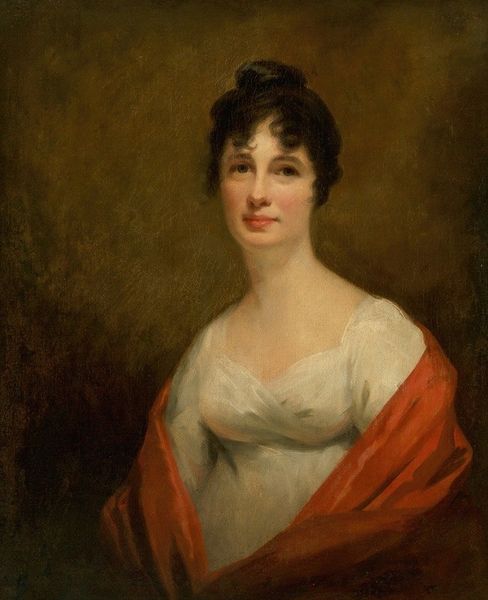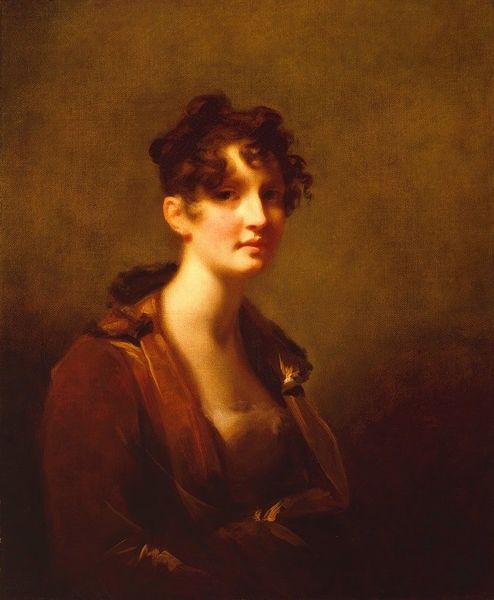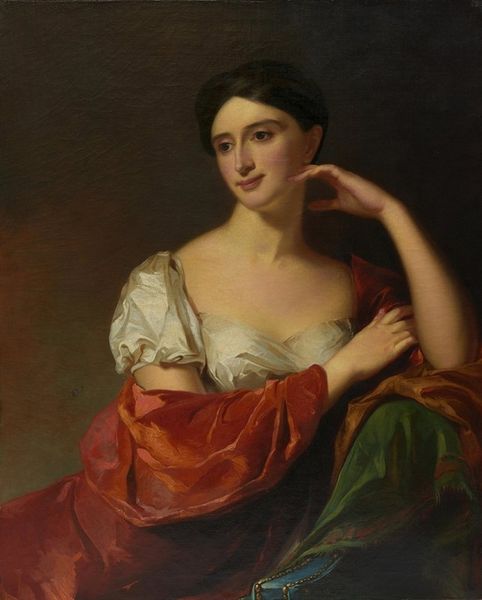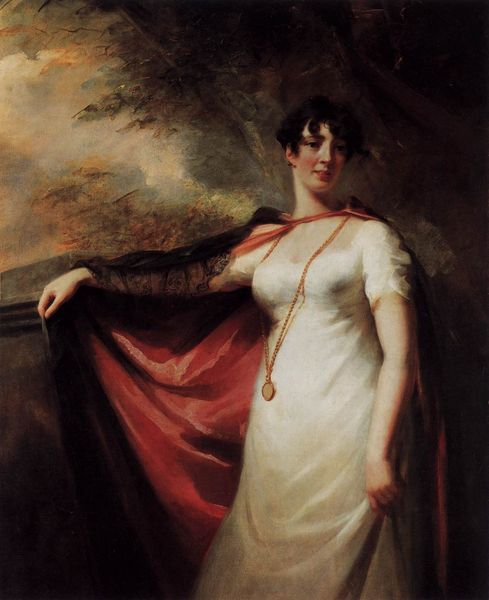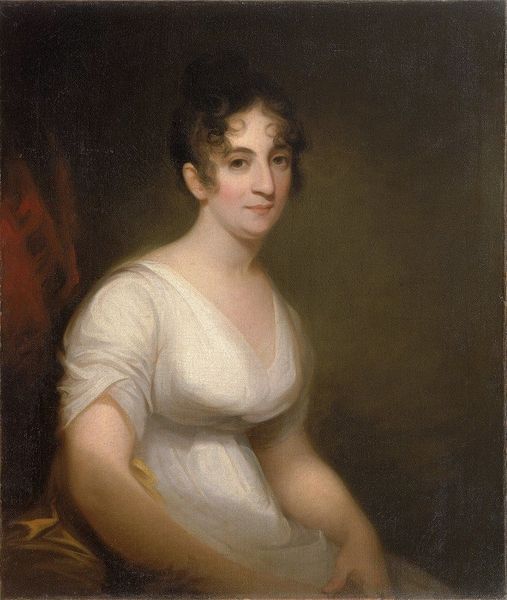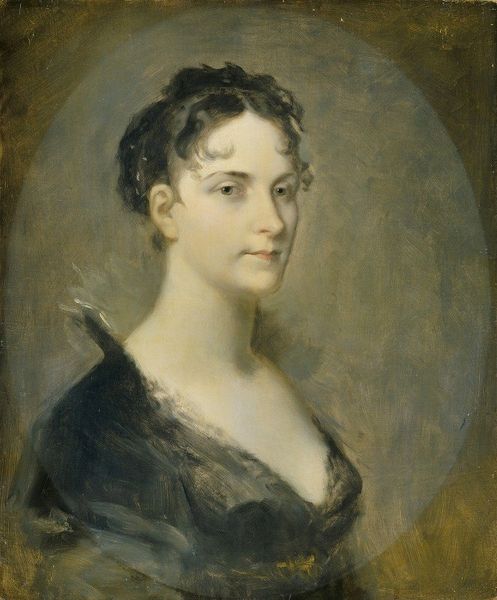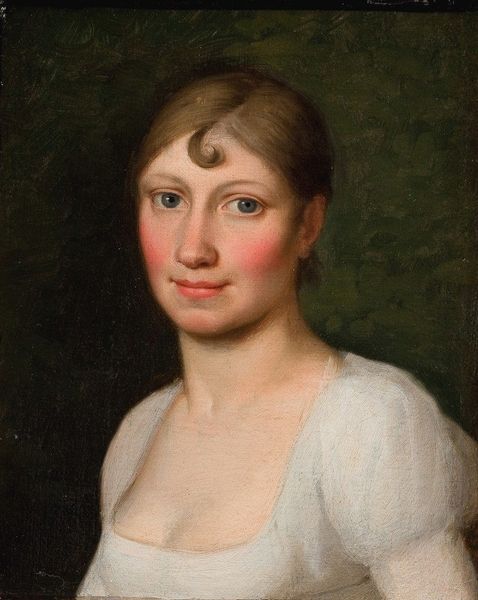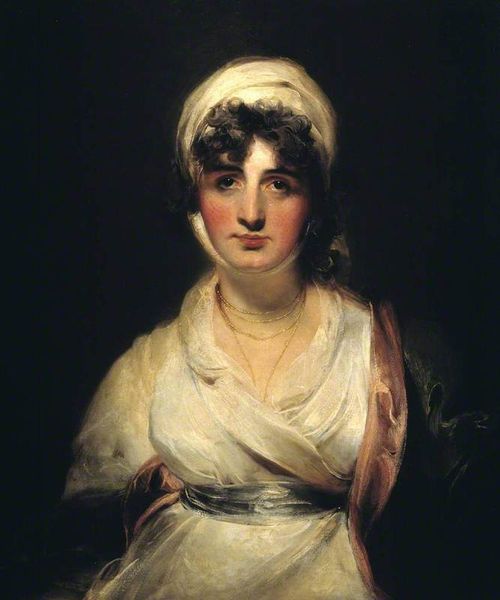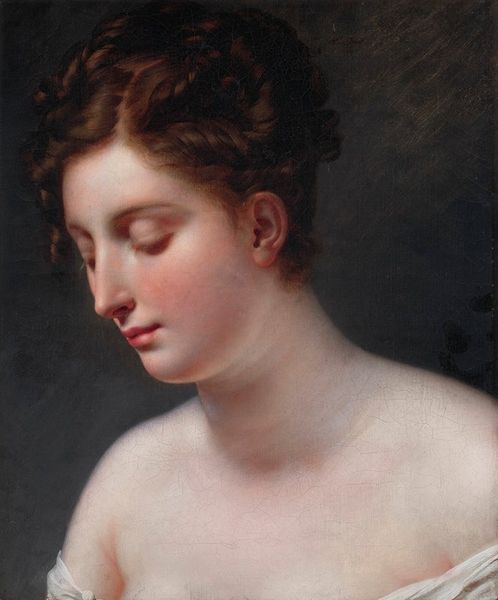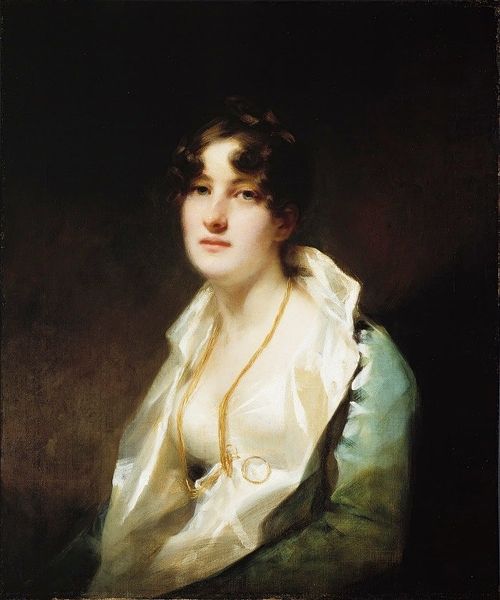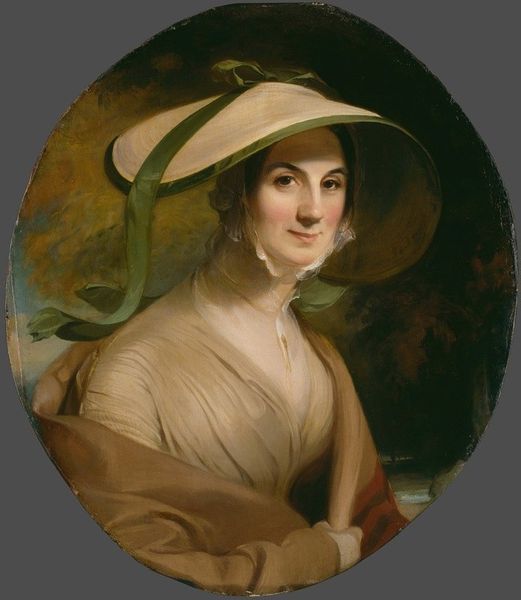
painting, oil-paint
#
portrait
#
portrait
#
painting
#
oil-paint
#
romanticism
#
history-painting
#
academic-art
Copyright: Public Domain: Artvee
Curator: Welcome. We are looking at Sir Henry Raeburn's "Miss Davidson Reid," an oil on canvas, created around 1800-1806. Editor: She seems both vulnerable and quietly powerful. There’s something about the lighting, the way it catches her skin, it almost feels like a stage spotlight, isolating her within that dark background. Curator: Raeburn, as a portraitist working during the Scottish Enlightenment, navigated a social landscape eager for expressions of refinement and intellect. It's intriguing how he captures the sitter in a style reminiscent of Romanticism with delicate, almost ethereal treatment of skin. Editor: Ethereal, yes. The gaze is quite direct, meeting ours head-on, but that demure little half-smile keeps her guarded. What stories are buried in the silence, especially as a woman existing during such patriarchal times? The low-cut gown and loosely draped shawl speak to conventions, sure, but she resists complete objectification. Curator: That interplay between expectation and subtle subversion is precisely where the art historically engaging narratives often reside. Raeburn secured a solid reputation depicting Scotland's elite and gentry during this period. His works become historical documents in their own right, cataloging class and the construction of identity. The artwork would've surely served specific social functions within Miss Reid's world, from signalling status to forming familial bonds. Editor: Right. And reading these portraits critically reveals not only a document of aristocracy but, crucially, points of intersection and conflict. Did she consent to this kind of representation? What constraints were put on Raeburn by the patron, and in turn, what decisions did he take in visualizing her, beyond just capturing a likeness? It’s important to question whose gaze prevails. Curator: Undoubtedly. Raeburn's technical facility and his business acumen combined to solidify his success in 18th and 19th-century society. He represents the prevailing values of his time while perhaps ever-so-slightly hinting towards coming shifts in the representation of women in art. Editor: I'm still caught by the shadow and light and thinking of her presence, both pronounced and reticent, hinting to me at hidden worlds within the context of social norms and womanhood. Curator: It’s this multi-layered intersection of person, painting and political milieu, making "Miss Davidson Reid" such a fascinating work of its era.
Comments
No comments
Be the first to comment and join the conversation on the ultimate creative platform.
